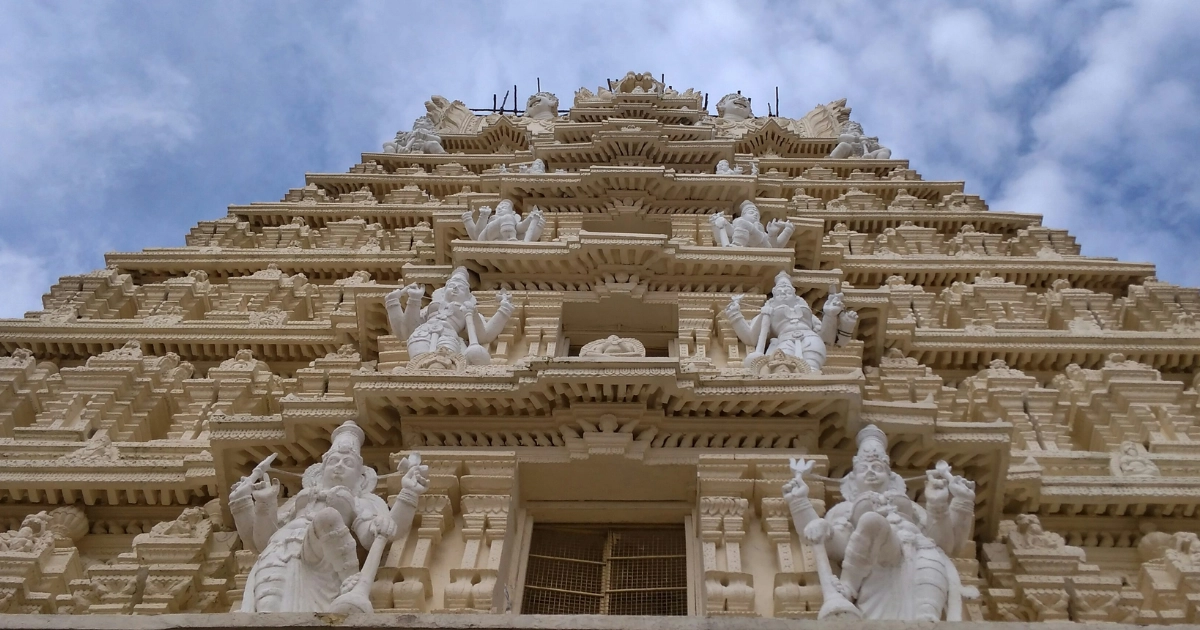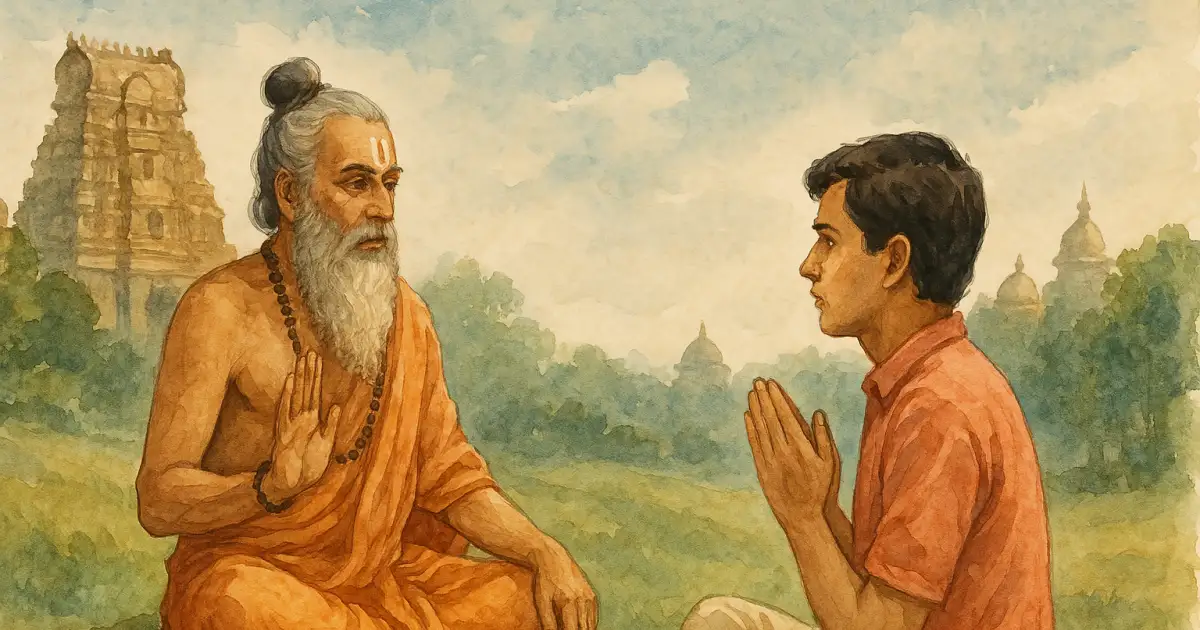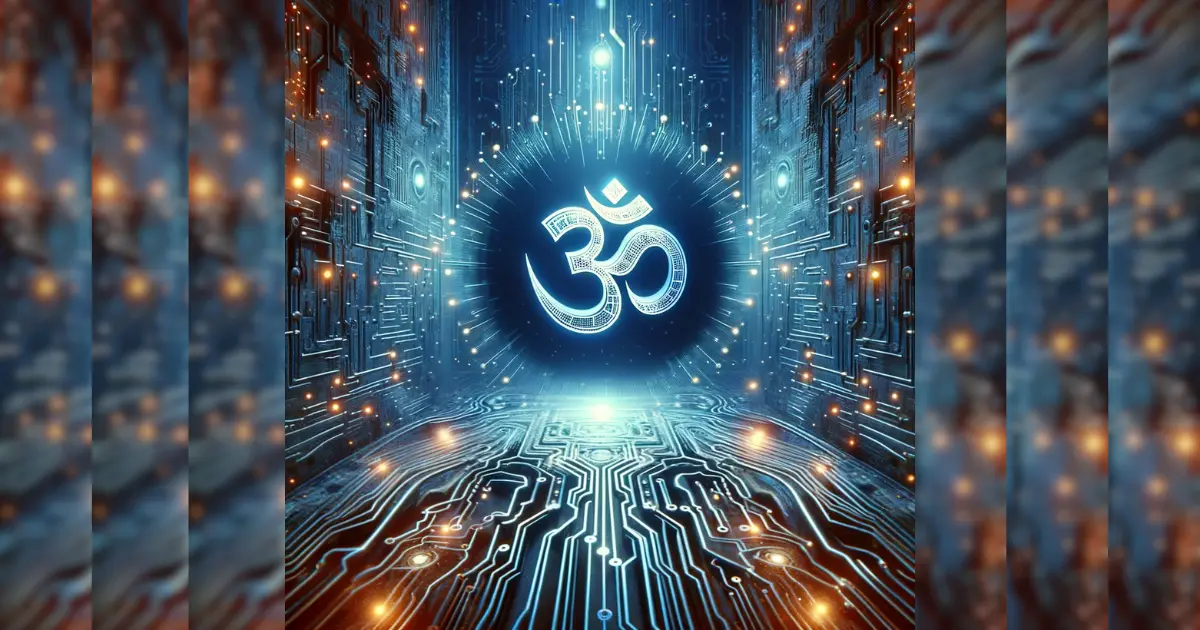The recent attempted takeover of Ma Chamundeshwari temple in the state of Karnataka is an example of gross interference of the state in Hindu religious affairs. The temple, situated atop the sacred Chamundi hills in Mysuru district, is of great spiritual significance to Hindus. A śakti pīṭha, it is believed that Mā Durgā vanquished Mahiṣāsura on this very hill. The temple was originally constructed by the Hoysalas in the 12th century, and subsequently maintained by the Vijayanagara and Wodeyar dynasties respectively.
In the covenant signed between the Wodeyar royal family with the Union of India at the time of merger, it was agreed that the ownership rights over the entirety of Chamundi hills and the temples therein would remain vested with the royal family. This claim was reinforced when the family listed the temple as its property in response to the 26th amendment to the Constitution in 1971.
Subsequently however, the Karnataka state government attempted to take over the temple in contravention of the covenant, a decision which was challenged by the Wodeyar royal family before the Karnataka High Court. While the case is still subjudice, in February of 2024, the state government passed the Shree Chamundeshwari Kshetra Development Authority Act, without discussion in the legislature. It vested the development authority, in actuality the state government, with the ownership of the temple and its properties.
Challenging the validity of this act in the HC, J Sai Deepak, representing the Wodeyar royal family in the position of arguing counsel, stated that the promulgation of the Act is ‘in contravention of the Rules of Procedure of the Legislative Assembly’. It was further contended that various provisions of the Act ‘infringe upon the fundamental rights of the Wodeyar family guaranteed under Articles 13, 25, 26, and 29 of the Constitution’.
Arguing in front of the single judge bench of the HC, the state had submitted that the legislation was only enacted to provide for the ‘constitution of an independent statutory Authority to undertake the work of development and maintenance of Shree Chamundeshwari Kshetra’. However, it was conceded that transfer of ownership of the temple’s properties before resolution of the writ petition was not tenable.
In a significant observation, the HC in its interim order recorded that, pending the disposal of the writ petition, ‘neither the movable nor the immovable properties belonging to the temple will be disposed of by the state’. Furthermore, it was made clear by the Court that ‘if the State Government intends to take any action or make any decision as contemplated under Sections 16 and 17 of the Act, 2024, such action or decision shall only be taken with the prior leave of this Court’.
The final arguments will be presented before the court on the 22nd of November, 2024.
Throughout the history of post colonial India, Hindu temples have been at the receiving end of selectively unsecular treatment.
Under the guise of regulation of entry to all classes of Hindus and ‘secular administration’, they have been taken over to be managed by executives appointed by the state. This has often led to corruption, alienation of temple property, and deprivation of the Hindu community from managing their own places of worship.
This case is just one of the examples of how lightly the state takes the rights of Hindus. While Article 25 of the constitution guarantees freedom of conscience and religion, it distinguishes between religious practices and secular activities associated with religious institutions. This loophole has been used by the state to uniquely target Hindu institutions, under the pretext of maintaining its secular activities (such as social reforms, economic activities etc.). As to an example of how expansive the scope of secular activity is, **in the case of Vaishno Devi Shrine, Board v. State of Jammu and Kashmir, AIR 1997, the Supreme Court held that the service of a priest is a secular activity and it can be regulated by the state under clause 2 of Article 25!
Under the state control of temples, not only have many ancient temples been left in derelict conditions with no pujāris to conduct prayers, many have had their lands and jewelries also misappropriated. Furthermore, there have been multiple cases of siphoning of idols from the temples itself, leading to infuriation among devotees.
One must ask, with the lakhs of acres of temple property managed by the Indian state, how is it that so many temples are deprived of revenue and adequate security?
Is it the secular Indian state’s position that Hindus in India are uniquely incapable of managing their own temples and its revenue without discrimination? The non allowance of revenue expenditure by the temple as it sees fit for Hindu causes has also resulted in a substantial deracination of the Hindu community. When the community is not allowed to utilize its own resources in temples to promote the cause of Hindu dharma and customs, it is inevitable that economics will sway Hindus away from their roots, towards greener pastures where there is money to be made.
Another point of importance which is evident in the Chamundeshwari temple case is the proposed development of the temple and hill as a tourist attraction. A temple is the abode of a deity, for whose darshan pilgrims come from far and wide. While the construction of amenities for pilgrims is welcome, the commercialization of the space is unwarranted; it can damage the temple environment and sanctity.
A simple reading of the text of the Act in this case betrays its financial approach to the temple, as opposed to the devotional approach that is required to maintain it. The text of the Shree Chamundeshwari Kshetra Development Authority Act mentions setting up of “public parks, horticultural or zoological gardens, fountain gardens, artificial water falls, game parks, lakes with boating or other water games or such other tourist attractions”. Are such measures needed to aid the upkeep of sanctity of the hill in any way or are they simply measures to increase the revenue of the government? Since the answer is evidently the latter, it further proves why the state must not insert itself into temple management or administration.
This is why freeing Hindu temples from government control is the need of the hour. As the management of religious institutions under Article 25 is subject in the concurrent list, the union government can come up with a model law delineating the powers and restrictions of the state with respect to religious institutions. The state must intervene only for the supervision of accounts, if and only if the need arises, or for the grounds under Article 25, post which it must again extricate itself from the temple’s management. The temple can then be allowed to be governed by the community, for the purpose of serving the deity and the Hindu community.






